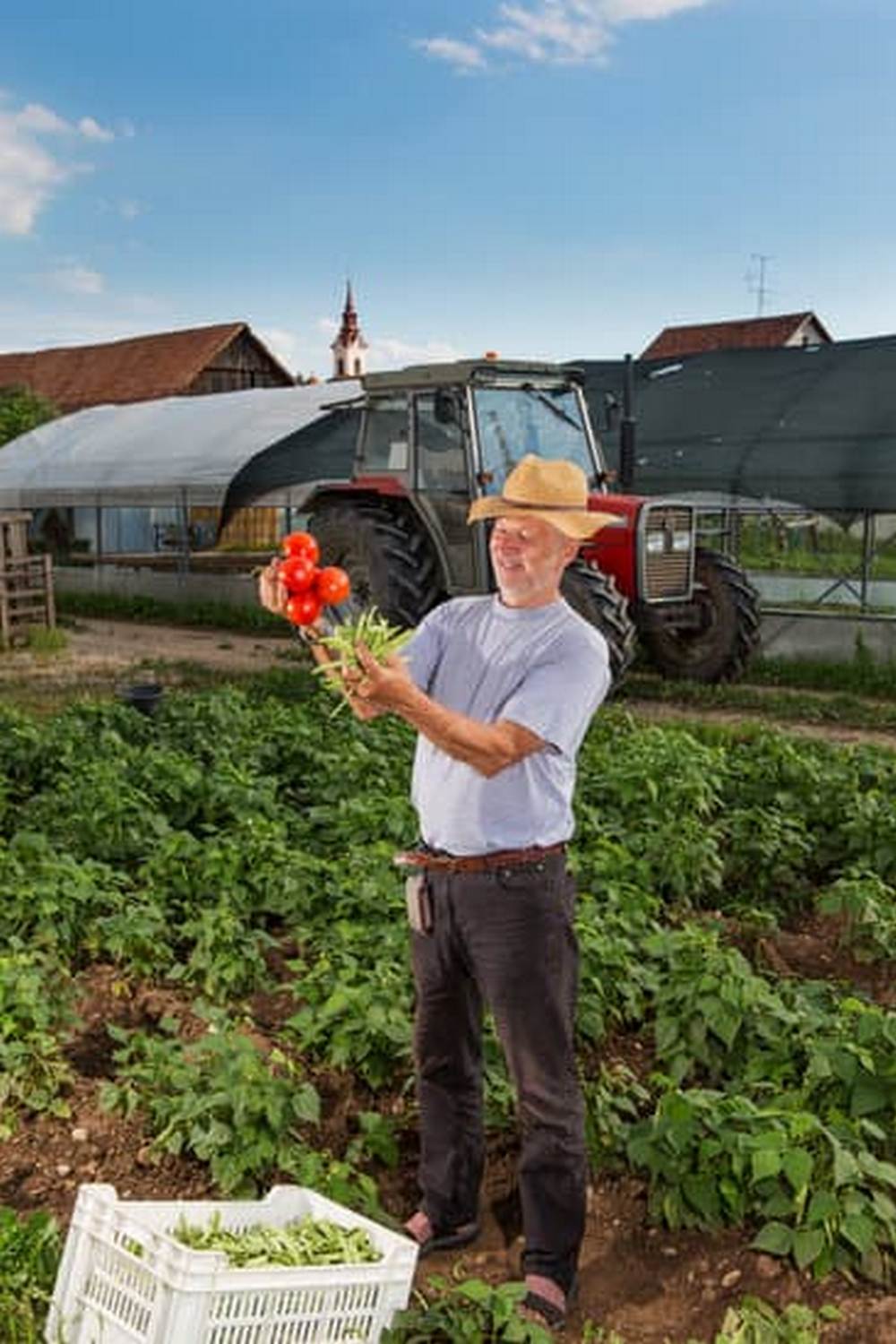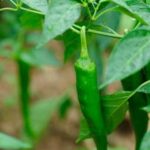When it comes to gardening, north-facing gardens present a unique set of challenges due to limited sunlight exposure. Choosing the right vegetables for these shaded areas is crucial for a successful harvest. In this article, we will explore the best vegetables for north facing gardens, as well as strategies to maximize sunlight and tips for maintaining a thriving garden.
North-facing gardens typically receive less direct sunlight throughout the day compared to south-facing gardens. This lack of sunlight can impact plant growth and productivity, making it essential to select vegetables that can thrive in these conditions. Understanding the challenges of north-facing gardens is key to ensuring a bountiful harvest.
By choosing the right vegetables for shaded areas, gardeners can still enjoy a flourishing garden even in less-than-ideal conditions. From leafy greens like kale and spinach to root vegetables like radishes and carrots, there are plenty of options that can thrive in north-facing gardens. With the right knowledge and techniques, you can create a productive and beautiful garden no matter which direction it faces.
Understanding the Challenges of North Facing Gardens
North facing gardens can present unique challenges for gardeners, particularly when it comes to choosing the right vegetables to grow. These gardens receive less direct sunlight compared to south facing gardens, making it essential to select vegetables that can thrive in shaded conditions. Understanding the specific challenges of north facing gardens is crucial for a successful harvest.
In north facing gardens, the lack of direct sunlight can affect plant growth and development. Vegetables that require full sun may struggle to produce abundant yields in these shaded areas. However, there are several vegetables that are well-suited for north facing gardens and can still thrive despite the limited sunlight.
To overcome the challenges of north facing gardens, it is important to choose vegetables that are shade-tolerant and do not require as much sunlight to flourish. Some of the best vegetables for north facing gardens include:
- Leafy greens such as spinach, kale, and lettuce
- Root vegetables like carrots, beets, and radishes
- Herbs such as parsley, mint, and cilantro
By selecting these shade-tolerant vegetables, you can ensure a bountiful harvest even in a garden with limited exposure to sunlight. With proper care and attention to soil quality and watering needs, you can create a thriving vegetable garden in your north facing yard.
Importance of Choosing the Right Vegetables
When it comes to gardening in north-facing gardens, selecting the right vegetables is crucial for a successful harvest. Due to the limited sunlight exposure in these areas, choosing plants that thrive in shaded conditions is essential. By carefully selecting the best vegetables for north-facing gardens, you can ensure a bountiful and healthy crop.
To help you make informed decisions about which vegetables to plant in your north-facing garden, consider the following options:
- Leafy greens: Vegetables like spinach, lettuce, kale, and Swiss chard are great choices for shaded areas as they can tolerate less sunlight.
- Root vegetables: Plants such as carrots, beets, radishes, and turnips are also suitable for north-facing gardens due to their ability to grow well in partial shade.
- Herbs: Culinary herbs like mint, parsley, cilantro, and chives can thrive in shaded conditions and add flavor to your dishes.
In addition to these vegetable options, certain fruits such as strawberries and raspberries can also do well in north-facing gardens. By incorporating a variety of plants that fare well in shady environments, you can create a diverse and productive garden space. Remember that proper care and attention to soil quality, watering needs, and planting techniques are key factors in the successful growth of these vegetables.
Best Vegetables for Shaded Areas
When it comes to gardening in north facing gardens, one of the key challenges is dealing with limited sunlight. However, this doesn’t mean that you have to give up on growing your own vegetables. There are several options for vegetables that thrive in shaded areas and can still provide a bountiful harvest. By choosing the right vegetables for your north facing garden, you can enjoy fresh produce throughout the growing season.
Leafy Greens and Herbs
Leafy greens like spinach, lettuce, and arugula are excellent choices for shaded areas as they don’t require as much direct sunlight to grow. These vegetables also tend to bolt quickly in hot weather, making them perfect for cool, north facing gardens. Additionally, herbs such as parsley, cilantro, and mint can also thrive in shaded areas and add flavor to your dishes.
Root Vegetables
Root vegetables like carrots, radishes, and beets are great options for north facing gardens because they focus their energy on developing underground rather than aboveground. This makes them well-suited to environments with limited sunlight. Planting these vegetables in raised beds or containers can also help improve drainage and maximize sun exposure when available.
Brassicas
Vegetables from the Brassica family, such as broccoli, cabbage, and kale, are known for their hardiness and ability to withstand cooler temperatures. These vegetables can thrive in shaded areas while still providing a nutritious addition to your meals. Consider rotating these crops with other shade-tolerant vegetables to make the most of your north facing garden space.
By selecting the best vegetables for north facing gardens like leafy greens, root vegetables, and Brassicas, you can create a thriving garden despite limited sunlight. With proper care and attention to planting techniques specific to shaded areas, you can enjoy a successful harvest of fresh produce throughout the growing season in your shady garden space.
Strategies for Maximizing Sunlight in North Facing Gardens
North facing gardens can present a unique challenge for gardeners, as they receive limited sunlight throughout the day. However, there are several strategies that can help maximize the amount of sunlight your garden receives, allowing you to grow a wider variety of vegetables successfully.
One of the most effective ways to increase sunlight exposure in a north facing garden is by strategically placing reflective surfaces such as mirrors or white walls to bounce sunlight back onto the plants. This simple technique can make a significant difference in the overall growth and health of your vegetables.
Another strategy for maximizing sunlight in a north facing garden is to choose vegetables that are well-suited for shaded areas. Leafy greens like spinach, lettuce, and kale are excellent choices for these conditions, as they require less direct sunlight compared to other sun-loving vegetables.
Additionally, root vegetables such as carrots, radishes, and beets can thrive in partially shaded environments, making them ideal options for north facing gardens. By selecting the best vegetables for north facing gardens, you can ensure a bountiful harvest despite the limited sunlight.
In addition to selecting the right vegetables, proper planning and maintenance are essential for success in a north facing garden. Regularly pruning surrounding trees or shrubs that may be blocking sunlight can help increase exposure to natural light.
Additionally, using raised beds or containers allows you to position your plants in areas where they will receive the most sun throughout the day. With careful consideration and strategic gardening techniques, even north facing gardens can yield an abundance of fresh and healthy produce.
| Vegetable | Sunlight Preferences |
|---|---|
| Spinach | Partial Shade |
| Carrots | Partial Shade |
| Kale | Partial Shade |
Tips for Success
Choosing the Right Soil
North facing gardens often struggle with limited sunlight, and therefore it is crucial to ensure that the soil in these areas is rich and well-draining. Opt for a high-quality garden soil mix that is nutrient-rich to provide your vegetables with the necessary nutrients to thrive. Adding compost regularly can also help improve the soil structure and fertility, allowing your plants to grow strong and healthy despite the lack of direct sunlight.
Watering Techniques
In north facing gardens, it’s important to pay close attention to watering techniques to ensure that your plants receive adequate moisture without becoming waterlogged. One effective method is drip irrigation, which delivers water directly to the base of plants, minimizing evaporation and ensuring that the roots receive consistent moisture. Additionally, mulching around your plants can help retain soil moisture and reduce the frequency of watering, especially in areas where sunlight is limited.
Planting Strategies
When planting vegetables in north facing gardens, consider choosing varieties that are well-suited for shaded areas. Leafy greens like spinach, lettuce, and kale are excellent choices as they require less sunlight compared to other crops. Root vegetables such as carrots and beets can also thrive in these conditions.
To maximize space and sunlight exposure, consider using raised beds or vertical gardening techniques to make the most of the available light. By selecting the right vegetables and implementing proper planting techniques, you can set yourself up for success in a north facing garden.
Recipes and Cooking Ideas for the Harvest
North facing gardens present a unique challenge for vegetable gardeners due to the limited sunlight exposure. However, with the right selection of vegetables and proper care, you can still enjoy a bountiful harvest from your shaded garden. When it comes to choosing the best vegetables for north facing gardens, it is essential to opt for varieties that thrive in lower light conditions and do not require full sun exposure.
One of the best vegetables for north facing gardens is leafy greens such as spinach, lettuce, and kale. These vegetables are known for their ability to grow in shaded areas and can tolerate less sunlight compared to other crops. Leafy greens are not only nutritious but also versatile ingredients that can be used in a variety of recipes, from salads to smoothies to stir-fries.
Another excellent choice for north facing gardens is root vegetables like radishes, carrots, and beets. These crops do not require as much sunlight as fruiting vegetables and can still produce a plentiful harvest even in shady conditions. Root vegetables are nutrient-dense and can add flavor and texture to soups, stews, roasts, and salads. By incorporating these best vegetables for north facing gardens into your planting plan, you can ensure a successful gardening season despite the challenges of limited sunlight.
| Vegetable | Cooking Ideas |
|---|---|
| Spinach | Salads, sautéed with garlic, added to smoothies |
| Carrots | Roasted with herbs, grated into slaws or muffins |
| Kale | Kale chips baked with olive oil & seasoning or added to soups/stews |
Maintenance and Care for Vegetables in North Facing Gardens
In conclusion, when it comes to maintaining and caring for vegetables in north facing gardens, choosing the right crops is crucial. Opting for vegetables that thrive in shaded areas such as leafy greens, root vegetables, and herbs can help ensure a successful harvest despite limited sunlight. By selecting the best vegetables for north facing gardens, gardeners can work with the conditions they have and still enjoy a bountiful crop.
Additionally, strategies for maximizing sunlight in north facing gardens are essential. Positioning raised beds or containers strategically to catch the most sunlight, as well as utilizing reflective surfaces like white walls or mirrors to redirect light can make a significant difference in plant growth. Furthermore, regular monitoring of soil moisture levels, proper watering techniques, and utilizing enriching organic fertilizers can help maintain healthy plants in these challenging conditions.
In essence, while north facing gardens may pose challenges due to limited sunlight exposure, with the right vegetable selection and care practices in place, gardeners can still achieve a flourishing harvest. By being mindful of soil quality, water management, and strategic planting techniques, even those with less than ideal garden orientations can enjoy a successful growing season full of delicious homegrown produce.
So don’t be discouraged by a lack of direct sunlight – by implementing these tips and tricks, you can make the most out of your north facing garden and reap the rewards of your efforts.
Frequently Asked Questions
What Vegetables Require the Least Amount of Sun?
Some vegetables that require the least amount of sun include leafy greens like lettuce, spinach, and kale. These plants can still thrive with partial sun or shade, making them perfect for shadier areas in your garden.
What Plants Are Best for a North Facing Garden?
Plants that are best suited for a north facing garden are those that can tolerate lower light conditions. Shade-loving plants like hostas, ferns, and astilbe can thrive in these environments where direct sunlight is limited. These plants will thrive in the cooler conditions provided by a north-facing garden.
What Vegetables Grow Best in Northern Gardens?
Vegetables that grow best in northern gardens are those that are able to withstand cooler temperatures and shorter growing seasons. Root vegetables like carrots, beets, and radishes do well in these environments.
Other cold-hardy vegetables include broccoli, cauliflower, and Brussels sprouts which can handle the frost better than other varieties. These veggies will give you a bountiful harvest even in colder climates.

If you’re looking to get into vegetable gardening, or are just looking for some tips on how to make your current garden better, then you’ve come to the right place! My name is Ethel and I have been gardening for years. In this blog, I’m going to share with you some of my best tips on how to create a successful vegetable garden.





